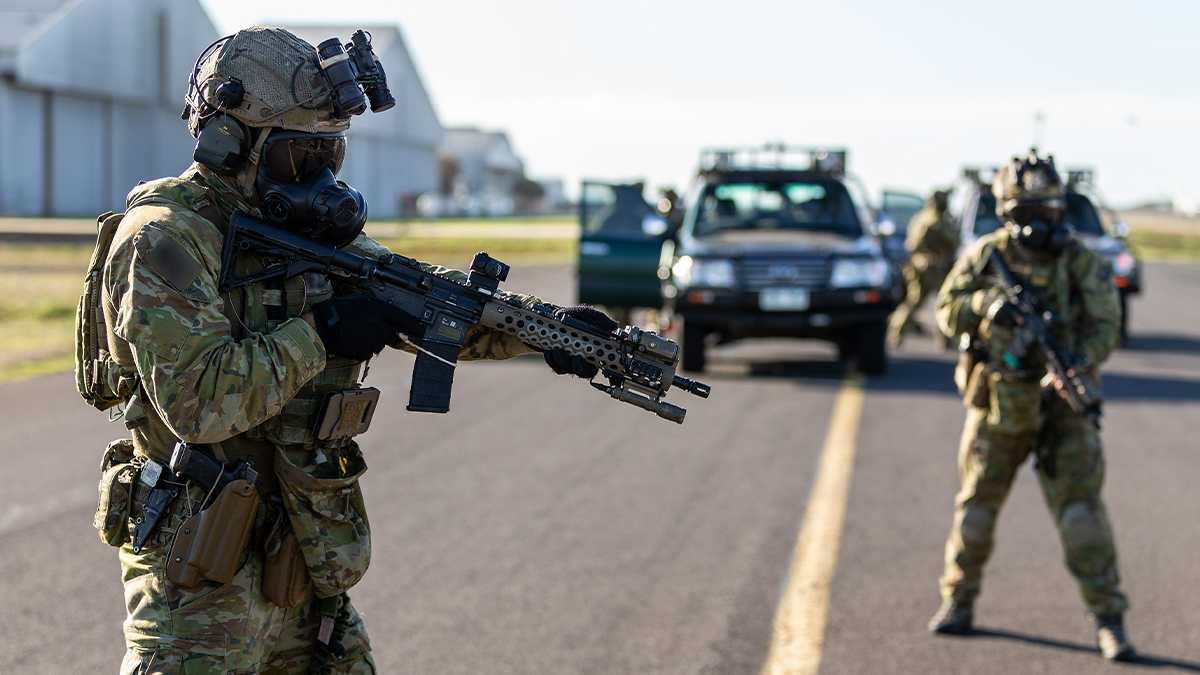Emerging Threats and Opportunities (ETOs) is a regular blog series on the Land Power Forum that collects together blogs, podcasts and articles of interest with the goal of creating discussion on the topic of land power.
Lessons
From Defense News, discussion of Israel’s plans for reform to its armed forces. Termed ‘Plan Momentum’, Israeli modernisation vectors were reportedly driven by Iranian military threat considerations (directly, and also indirectly through proxies such as Hezbollah and Hamas). The plan emphasises ‘multi-dimensionality’ in ways echoing the U.S. terminology of Multi-Domain Battle, albeit, to lower levels of delegation. Joint capability is envisaged to lower levels than is typical at present through enhanced connectivity and therefore battlespace awareness across the force. In practical terms, this plan encourages expanded procurement of UAS, Precision Guided Munitions, strong air-defence, employment of AI and the fielding of F-35s and Future Fighting Vehicles.
The Information/Cyber Domain
From MIT Technology Review, a piece that examines the Coronavirus epidemic through the lens of the amplifying noise generated via social media. This noise makes accurate information difficult to identify and difficult to trust in the context of so much conflicting advice. The implications are heightened fears as issue-motivated groups amplify the information that suits their respective agendas, creating environments of heightened emotions. The implication of this example is to reinforce that an information abundance—much of which is incorrect—is the new normal and must be expected when considering engagement with security threats. Furthermore, as ASPI’s Michael Shoebridge illuminates, the knock-on effects of the Coronavirus are likely to continue to present second- and third-order threats and opportunities which may not have been apparent at first glance. This ASPI article may prove to be a useful example of the concept of a ‘Black Jellyfish’. This metaphor extends from the more broadly understood ‘Black Swan’—an unknown unknown—and is instead an ‘unknown known’. Epidemics are not new, indeed public health has considered how to deal with such threats for a considerable period, but the unknown effects that permeate the globalised community represent the ‘sting in the tail’—potentially quite distant from the initial disruption—which will prove difficult to predict and to counter.
Irregular Warfare and Terrorism
From the Forge, Anant Mishra provides a discussion of the importance of intelligence to counter-insurgency. This article is a timely addition to Army’s discourse as a peace deal has seemingly been struck with the Taliban in Afghanistan. At this juncture, it is valuable to reflect upon lessons from these counter-insurgency environments. Further to Anant’s lessons pertaining to intelligence, a subsequent lesson may be the value in understanding insurgency during its latent/incipient phase, in which case Simon Tisdall of The Guardian cautions against Western ignorance of the growing Islamist influence in the Sahel. Other lessons may pertain to proxy dynamics that such conflicts generate; in which case Alex Deep, writing for the Modern War Institute, cautions of the Proxy Dilemma that results from questions of ‘Skin in the Game’, as Nassim Taleb might say.
Major Power Competition & A Regional Worldview
Also from ASPI, Peter Edwards reflects upon the lessons of the Vietnam War, 50 years on from its turning point with the ending of the Lyndon Johnson presidency. This period marked the adoption of U.S. ‘Vietnamization’ policy and the shifting U.S. culture away from the challenges of ‘counter-revolutionary warfare’. Although remembered as a U.S. failure, Peter Edwards expands the aperture of our reflection upon this conflict. In an era that risked escalation into an open major conventional war with China (the first being Korea), it must be remembered that the U.S. strategy was containment. To this end Singapore’s Lee Kuan Yew, quoted by Hugh White, argued that Western efforts to contain communism were successful; limited to South Vietnam, Cambodia and Laos falling to Communist influence, while Thailand, Malaysia, Indonesia, Singapore and the Philippines were able to defeat Communist subversive efforts. Pausing and reflecting upon the worldview of our regional partners may thus elicit a contrary perspective to our (and U.S.) national narratives. Forward-casting into today’s era of major power competition, brief reflection upon the lessons of the Communist competition in South-East Asia may elicit lessons to help guide the development of future strategy.
Defence innovation
From ASPI Strategist, a piece from Marcus Hellyer examining risks inherent in Australia’s acquisition of the Triton UAV. Marcus presents an argument of significant risk within the Triton acquisition, but this piece also speaks to a much broader conversation. In 2011, Colonel John Angevine described Australia’s acquisition culture as focussed upon ‘dangerous luxuries’. The Triton represents an exquisite capability but as Colonel Angevine argued, just how necessary are all its capabilities? Are we able to sustain it, both in operation and through combat attrition? As the ADF considers broader capability acquisition, Hellyer’s analysis of the Triton case informs an appreciation of needs versus program acquisition risks.
Longer reads
From The New Yorker (and also New America), a piece examining the state’s decision to kill in the context of the targeting of Qassim Suleimani (and importantly, Abu Mahdi al-Muhandis). The relevance of this article lies in the tension between the Hague Convention of 1907 providing protections against assassinations outside of wartime; what protections might be lost from state sponsorship of terrorism; and what a blurring between peace and war in a period of major power competition means for international norms. This piece is also informative with regards to strategic level discussion of options provided to political leadership. It is also available as a podcast for those preferring this format (see the New Yorker link above to connect to a podcast platform).



